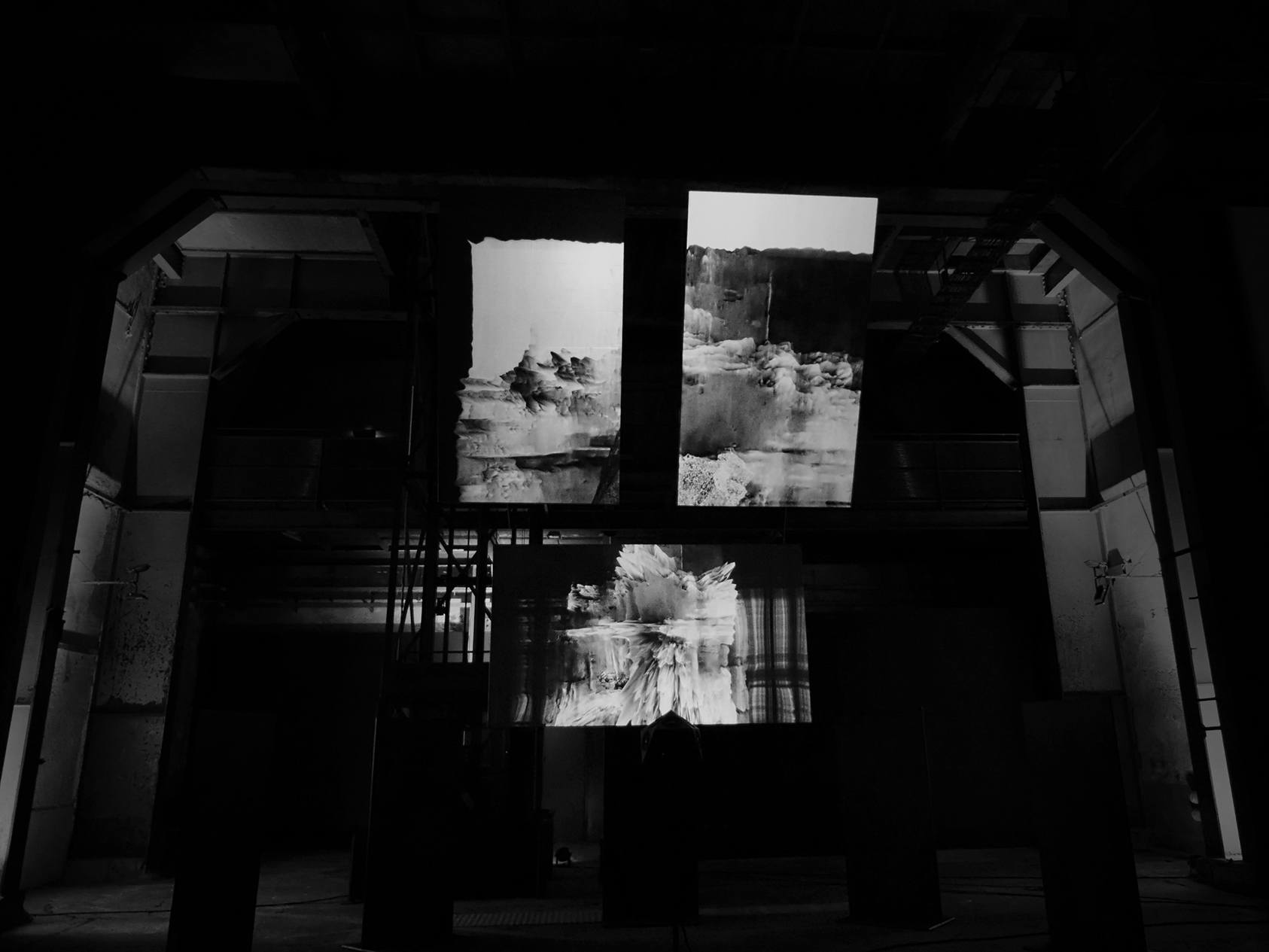Audiovisual installation / Artifical intelligence
When: 2019
Where: Hallein (AUT)
Event: Media Art Festival Schmiede
Fund: FeralAir
The installation aims to create sensorially perceivable intersections between real-manifested and virtual-latent anthropogenic environments. A machine learning algorithm, trained with concepts of industrial architecture, is slightly transforming the architecture of the venue by merging it with morphing three-dimenisonal audiovisual content, created by the artificial machinery.
Either projection surfaces placed above the audience or a projection mapping (picking up characteristics of the venues‘ construction), inherently reacting with the architecture, are displaying the visual processes of the algorithm. 3D Models derived from scans of the original fittings and architectural selections of the building and surroundings are additionally merged into the visual composition – a composition yielding an immersive conflation between the artistic
and the functional concepts of the building. Light will be arranged as a bridge between the digital output and the physical space. On-site sound recordings, manipulated by the system and distributed via a 20 channel 3rd order ambisonic sound system, are creating a stunning 3 dimensional sound perception. The auditive experience is emphasized by physical reflective elements and by the reflectivity of the space itself.

The core of the technical apparatus consists of a deep neural network (DCGAN model) and a 20 Channel 3rd order ambisonc 3D sound distribution concept. The neural network is trained to see and interpret industrial architecture. It continuously produces visualisations of industrial environments in a binary picturesque manner.
3D objects that resemble individual rooms and corpuses of the building complex complement the flow of abstract images from the machine learning process. New corners and angles are revealed. The purely computer-generated outcome stimulates the associative imagination of the audience, captivating it with painterly-aesthetic qualities.
Both machine learning and photogrammetry are ubiquitous imaging techniques of our time. Higher order ambisonic sound concepts can be realized in (and adoptet to) specific given spacious dimensions. The above-mentioned setup is specifically configured as a research
tool, to explore and further illustrate phenomenological relevance of the audiovisual augmentation in the architectural context. Sound, light and space together are transforming the characteristics of the environment in realtime.